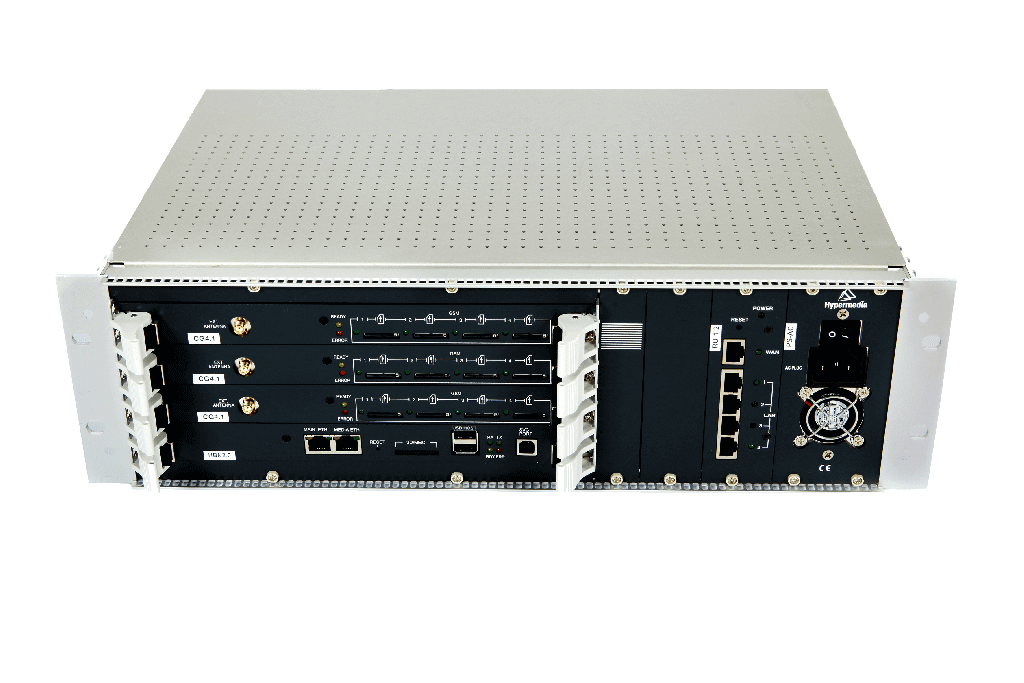SIMBOX GSM is a hardware solution for external storage of SIM cards for a GSM termination business
Hypermedia’s SIM Box is specifically designed to be used for cellular termination business and the SIMBOX is one of the hardware modules of the cellular termination equipment. The main function of it is to store a variety of SIM-cards which take part in the call termination process.
- Cellular termination or Call termination is the business of connecting VoIP (Voice over IP) calls to the cellular network by means of a VoIP-cellular gateway with a SIMBOX that will receive and transfer the call to a cellular network on its way to the destination subscriber.
- A VoIP Gateway contains cellular modules that connect it to the provider's network and an Internet connection for receiving VoIP signal. The VoIP gateway receives an IP call via the internet, converts it and then relays it to the destination cell phone via cellular antennae.
A SIM box device holds a bundle of SIM cards separately from VoIP-cellular gateways in order to ease management tasks and enable the swapping of SIMs while the Gateway is still active and without the need to take out its cellular cards and disrupt operations.
A SIM Box enables you to install and manage any amount of SIM cards using different mobile operators and enhance the working of several cellular gateways placed in different locations. The available configurations include 60 SIMs and 120 SIMs, but several SIM boxes can be connected to one system providing the ability to use an practically an unlimited amount of SIMs in your system.
Two configurations of SIM box are available, one for 60 SIMs and the other for 120 SIMs. One system can include as many SIM boxes as you need, in order to give you the ability to use as many SIMs necessary in the cellular termination process.
Module-based structure of the product hardware opens up an array of possibilities to its users such as:
- SIM cards being placed separately from GSM modules (this option requires high-quality Internet connection between GSM gateway and SIM Box)
- SIM cards taking part in the termination of voice traffic and SMS termination to different destinations or countries which could be routed to the same spot. This makes it easier to manage their activity without too much complexity. It is important to have a variety of GSM gateways located in different countries or in different regions of the same country. All SIM cards which are involved in termination may be located in one or more SIM Boxes placed in the same location, saving you the need for a long trip just for the trivial task of changing the SIMs.
One of the optimization mechanisms of the SIM BOX cellular system is called "SIM Rotation". SIM cards contained in each SIM Box can be divided into groups and each of these groups can be attached to a separate cellular module of the VoIP gateway. Not only does this allow you to maximize the usage of every SIM, but it also allows you to minimize the SIMs' workload, which will prolong their life.
Hypermedia's system can register an array of SIM cards on different cellular modules of a particular frequency. If one has several cellular gateways located in different parts of the city, the system will conjure the SIM cards to carry out calls from every gateway. This creates a map of the user's activity and enables you to secure your cards from being blocked by the mobile operator.
A cellular Gateway takes calls from a variety of interfaces and transmits them through the cellular network of the installed SIMs. This is known as “Termination”, whereby a call is routed from one source through a specific interface to another. When it comes to a Call Centre and its conversion rate, the immediate benefit of using such a gateway is obvious. By using a SIMBOX cellular device, we can disguise our calls by transmitting them out via a cellular connection, and make them seem as a regular cellular call to the prospective customer and, therefore, succeed to have more pickups. Another great advantage of this solution is the ability to do “SIM Rotation”. Most cellular gateways comprise of 20 to 300 SIM slots (or even more), and one can set the Gateway to randomly select a SIM for a call. This spans out the probabilities and prevents “burning out” of the SIM too fast.
Moreover, changing the cellular number is as simple as replacing the current SIM with a new one without the need to request anything from the telecom company and then wait for their response.
















